TO
1 - 25 of 11
| Creator | Title | Description | Subject | Date | ||
|---|---|---|---|---|---|---|
| 1 |
 |
Gilbert, John | A novel tool to capture neural activity across an entire brain using C-FOS as an indicator | Immunohistochemical staining for the expression of the immediate early gene c-Fos is a powerful tool to measure neuronal activation of neurons across an entire brain. The results of c-Fos immunostaining are often quantified by counting the number of immunolabeled cells in a region of interest (ROI) ... | Brain - Localization of functions - Research; Brain - Physiology - Research; Brain mapping - Research; Memory - Research; Mice as laboratory animals - Research; Brain activity; Immunohistochemical staining | 2016-05 |
| 2 |
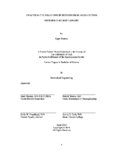 |
Sharma, Kapil | Analyzing the relationship between PDM2 and B-catenin proteins in human cancers | Tumorigenesis is promoted by the manipulation of several co-factors and pathways, in which PKM2 and P-catenin proteins play a significant role in a variety of cancers. New research states that these two hegemonic cancer proteins directly bind with each other and may provide a new angle for cance... | Pyruvate kinase - Research; Tumorigensis - Research | 2016-04 |
| 3 |
 |
Gajiwala, Snehal | Determining the variability of depressive brain circuitry among healthy subjects for deep brain stimulation | Deep Brain Stimulation (DBS) is being evaluated to treat Treatment-Resistant Depression, though it has shown mixed results. We believe that variability within the fiber tracts of the brain may account for these outcome differences. In this study, we attempt to characterize this potential variation.... | Brain stimulation - Therapeutic use - Research; Depression, Mental - Treatment - Research; Deep brain stimulation; Depressive brain circuitry; Fiber tracts; Tractography | 2016-05 |
| 4 |
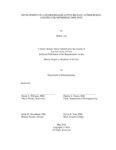 |
Luo, Shirley | Development of a bioabsorbalbe active release antimicrobial coating for orthopedic implants | Orthopedic implantations often create an opportunity for biofilm-related infections to arise. Patients infected with biofilm must often undergo additional surgeries for repair or replacement, which puts them at a greater risk of osteomyelitis, sepsis, and other complications including death [17]. T... | Orthopedic implants - Research; Anti-infective agents - Research; Staphyloccoccal infections - Prevention and control - Research; Antimicrobial coating; Staphylococcus aureus | 2016-05 |
| 5 |
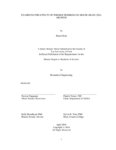 |
Flach, Brian | Examining the effects of whisker trimming on mouse brain cell growth | Hoxb8 microglia are a particular breed of scavenger cells in the brain which have been related to obsessive compulsive disorder (OCD)-like behavior among other behavioral disorders. These cells have been found to reach full maturity during a period of neurological development known as the critical ... | Obsessive-compulsive disorder - Research; Microglia - Research; Mice as laboratory animals - Research; Whiskers; Scavenger cells; Hoxb8 microglia | 2016-04 |
| 6 |
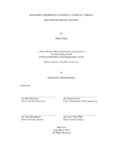 |
Wang, Minna | Managing limited ECG access in a clinical cardiac electrophysiology setting | Electrocardiographic Imaging (ECGI) is a computational approach that seeks to reconstruct cardiac electrical activity with high precision from body surface ECGs by solving a numerical inverse problem. Though there have been great advancements in ECGI, there is still a need for progress in specific a... | Electrocardiography - Research; Heart - Diseases - Diagnosis; Body surface potentials | 2016-05 |
| 7 |
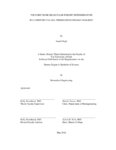 |
Singh, Anand | Polyurethane molecular weight determination in catheters via gel permeation chromatography | Antimicrobial catheter extrusions are loaded with an antiseptic drug in order to help prevent catheter-related infections. Previous research has shown that polymer molecular weight (Mw) can be used to control drug loading levels. Polyurethane based resin and catheter shaft extrusion samples were cho... | Catheters - Research; Bacterial diseases - Prevention; Drug loading levels; Gel permeation chromatography; Diffusion distance; Antimicrobial catheter extrustions; Catheter shaft extrusions; Bacterial Infections; MATLAB | 2016-05 |
| 8 |
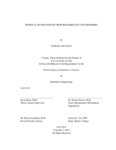 |
Lietzke, Stephanie | Removal of endotoxins from recombinant antithrombin | Endotoxins (also known as lipopolysaccharides or ETs) are a pyrogenic byproduct of the breakdown of gram-negative bacterial cell-walls, such as E. coli. They cause fever and septic shock in humans, and are therefore highly regulated by the FDA and USP. ETs are a common contaminant in recombinant pr... | Endotoxins - Research; Antithrombins - Therapeutic use; Sheep as laboratory animals - Research; endotoxin removal; Angiogenesis | 2016-04 |
| 9 |
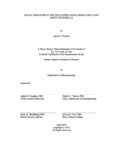 |
Newton, James | Social behaviors in the developing Danio Rerio larva and adult Danionella | Larval zebrafish (Danio rerio) in most respects excel as an animal model in the study of neural networks, due to their small size and optical transparency. These traits permit optogenetic manipulation and live neuronal imaging of the entire brain, which when paired with behavioral analysis, have pot... | Zebrafish (Zebra danio) - behavior; Zebrafish - embryology; Zebrafish - physiology | 2016-04 |
| 10 |
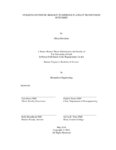 |
Davidson, Olivia | Utilizing synthetic biology to improve platelet transfusion outcomes | Platelets are essential to blood clotting. Due to a high risk of bacterial infection, donor platelets have short shelf -lives. As a result, being able to maintain a constant supply of platelets in vitro would be clinically valuable. This could be accomplished by using synthetic biology to guide stem... | Blood platelets - Transfusion - Research; Stem cells - Therapeutic use; Synthetic biology; Hematopoietic stem cells; Erthropoientin | 2016-05 |
| 11 |
 |
Palmieri, Nikole | Validation of a nonlinear optimization algorithm for reconstruction of diffused images | Living tissue is a diffusive light-scattering medium, preventing traditional fluorescence microscopy from being used as a diagnostic imaging modality. To determine microscopy from being used as a diagnostic imaging modality. To determine whether the nonlinear optimization algorithm developed for C... | Diagnostic imaging; Mathematical optimization; Image processing; Diffusion distance; Computational Cannula Microscopy; Nonlinear optimization; MATLAB | 2016-04 |
1 - 25 of 11
